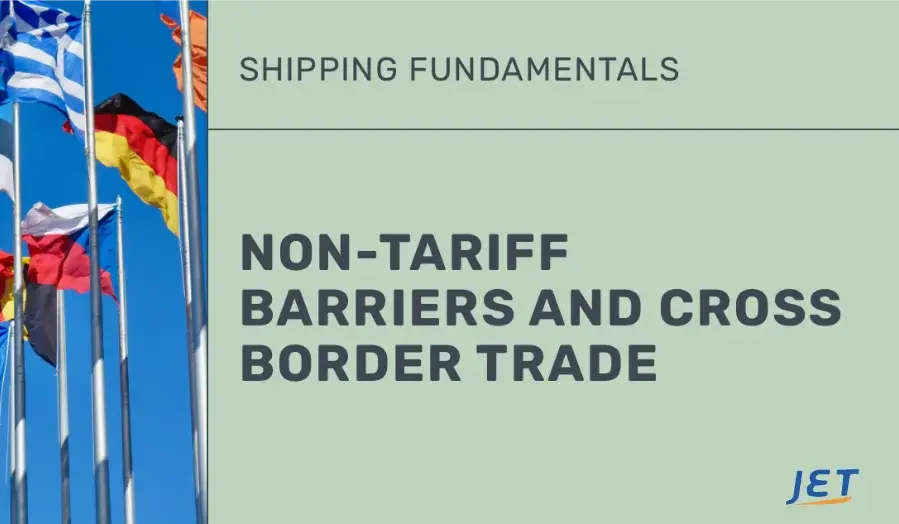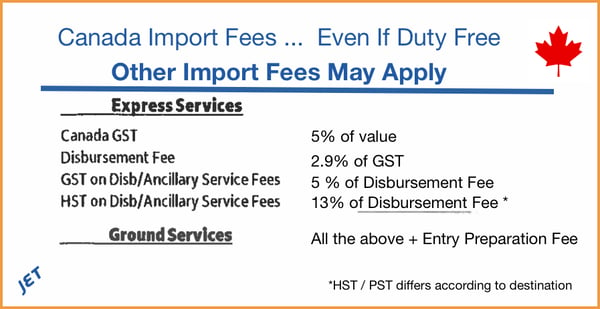
Non-Tariff Barriers and Cross border Trade
In most cases, obstacles to international trade have nothing to do with import duty. The term "free trade" is a reference to duty free import. With an overall reductions in global duty, import tariffs are not as much an issue. Even if not duty free, tariffs have a much lesser impact than other regulatory issues.
Modern trade benefits from dramatically reduction in tariffs.
- The average tariff rate in the United States was are lower from around 20-30% in the 1930''s to less than around 4% today.
- The EU’s average duty rate is less than 6%
- The average tariff in China is around 9%.
With the exception of a few product categories where tariffs remain high, non-tariff barriers are the major area of concern amongst trading partners.
Countries regulate international trade largely in the absence of significant tariff barriers. In place of high tariffs, rules and processes are put in place that serve as a non-tariff barrier to entry.
 Useful Information Regarding Import Duty
Useful Information Regarding Import Duty
 Expand your cross border opportunity
Expand your cross border opportunity
A trusted brand for over 40 years. Save more by utilizing the best shipping modes and processes. Strengthening your transportation team - even if you are a team of one! Contact our team for an initial consultation.
What are non tariff barriers?
Non-tariff barriers are trade barriers that limit the import or export of goods through methods other than tariffs. The WTO recognizes a range of non-tariff trade barriers. These include import licensing, pre-shipment inspections, rules of origin, custom delays, and other mechanisms that hinder or limit trade.
Non-tariff barriers to trade can be in the form of embargoes, import licensing, quotas, and regulatory approvals. Such obstacles are often justifiable for such things as consumer protection.
A few sensitive products remain with high tariffs. The non-tariff barriers are the real impediment for most goods. Multiple studies confirm non-tariff barriers are much more costly than import duty.
E-commerce duty free but with new
E-commerce companies, especially from China, are confronting increased regulatory oversight. European Union and American regulators are requiring increased regulatory compliance. There are legitimate concerns. Including such things as product, safety, and legality of products. However, this can also be viewed as a way to stem the flow of products importing from China. Not via additional duty, but by requiring additional processes and reporting.

Origin of Non-Tariff Barriers
Import duty was the traditional method for countries to collect revenue and protect domestic producers. Import tariffs with restriction making goods more costly.
Over the last several decades, industrial countries are transitioning away from high tariffs. But as cross border trade grew as a percentage of the global economy, so did the rules regulating imported goods.
Some Non-Tariff Barriers Exist for Good Reasons
It is important for countries to ensure imports bring a value to their economy. Goods that might be dangerous or somehow cause harm should be controlled. What can seem like a barrier for some can be viewed as good public policy by others. As the saying go, good fences make good neighbours!
How Non-Tariff Barriers can be harmful
Global trade is net positive for participating countries. Some non-tariff barriers serve as a sort of back door way of protecting inefficient domestic industries. A headline of "duty free access" can belie a reality of restricting access deep in fine print.
Non-tariff barriers serve the interest of groups seeking to influence trade regulation to their benefit . Groups commonly lobby to support domestic industries negatively impacting by imports.
Technical Barriers to Trade
The Agreement on Technical Barriers to Trade (“TBT Agreement”) binds all World Trade Organization (WTO) members. The TBTs purpose is to eliminate unnecessary obstacles to trade.
WTO members cannot implement technical requirements with the purpose to limit trade. At the same time it recognizes the need for technical requirements for legitimate purposes. Legitimate restrictions can include environmental and consumer protection.
The TBT Agreement also has processes to report and adjudicate complaints.
1. Protectionist barriers
Protectionist barriers are to protect certain sectors of domestic industries. The barriers take the form of licensing requirements, allocation of quotas, and antidumping duties.
2. Assistive and Administrative policies
Assistive policies protect domestic companies and enterprises. They do not directly restrict trade with other countries. Examples of assistive barriers include custom procedures, packaging and labeling requirements, technical and sanitary standards.
Licensing systems are an example. A license system gives authority for a country to issue permits for the import of certain commodities .
3. Embargoes
Embargoes are legal barriers to trade, and can be very restrictive. An embargo can ban on specific commodities or category of goods.
4. Restrictions on Quantity
Rather than an outright prohibition, nations sometimes restrict the quantity of specific goods and/or from from a specific country. Restrictions apply to products with a specific quantity.
5. Import deposit
Import deposit requires importers to pay the central bank of the country a specific sum of money for a definite period. The amount paid can be equal to the cost of imported goods.
6. Foreign Exchange Prohibitions
Government's financial measures can also increase import costs. Such measures include a letter of credit, advance payments of taxes and duties, and security deposits.
7. Consular Formalities
Nations sometimes demand that foreign entities to procure credentials, documents or consular agreements. Some such documents can include certificates of origin. The document requirement should be in the language of the importing country..
8. Sanctions
Countries impose sanctions on other countries to limit their trade activity. Sanctions achieve a political objective. Not so much non tariff barriers as an extension of foreign policy.
8. Customs Import processes
Just the process of customs clearance can be a huge costs. Often such processes include the restraints we review in this post. But, often the issue are not that there are rules. Rather, it is difficult when the rules are not consistent, without communication and unequal enforcement.
Modern trade agreements often include "express customs" import processes.

The Role of the World Trade Organization in Non Tariff Barriers
The WTO's role in the use of non-tariff barriers is significant. The WTO is responsible for regulating trade between its 164 members, which accounts for over 95% of cross border trade. Canada and the USA have been a members of the WTO from the start in 1995.
Example of Non -Tariff Impact: UK and Europe
The post Brexit UK-EU relationship includes non-tariff trade barriers. Leaving the EU give the UK the advantage of not having to comply with EU regulations. Regulatory divergence creates the need for non-tariff barriers by the European Union. The UK EU rift is an example of how non tariff restrictions can help manage regulatory divergence.
Goods crossing the UK- EU border need to meet rules are a type of non-tariff barriers.
Free Trade Agreements beyond Duty Free
Modern trade agreements focus on reducing non-tariff barriers, such as regulation and intellectual property requirements. They also reduce tariffs.
Canada's major trade agreements include NAFTA (USMCA/ CUSMA), CETA and CPTPP.
 Read more about Canada's Free Trade Agreements
Read more about Canada's Free Trade Agreements
 When is a Certificate of Origin Necessary
When is a Certificate of Origin Necessary
 Verify the correct declared value
Verify the correct declared value
 Confirm the correct invoice for customs
Confirm the correct invoice for customs
Request Information and Rates
....








